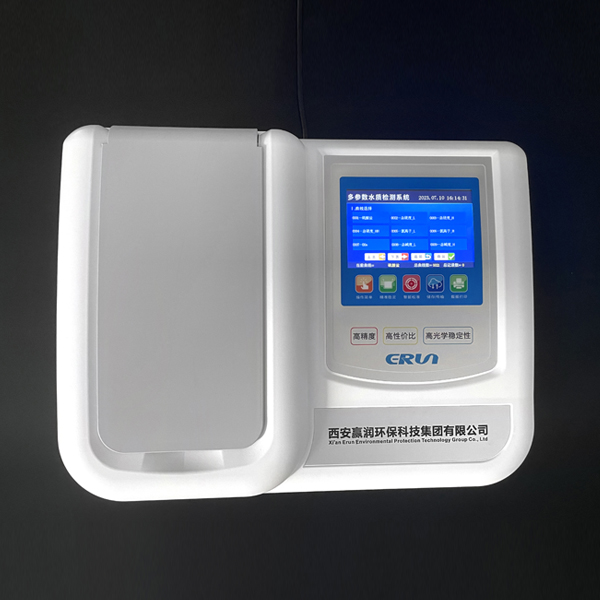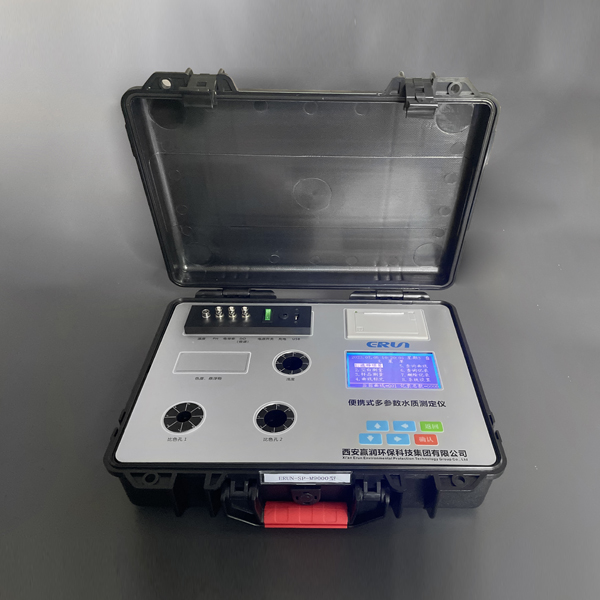In water quality testing, available chlorine, chloride ions, residual chlorine and total chlorine are important indicators for measuring the chlorine content in water. They differ in definition, testing methods, application areas, health effects and control standards. The specific analysis is as follows:
1.definition
- Available chlorine: Available chlorine refers to the chlorine content with oxidizing ability that can be produced by chlorine disinfectant added to water. Its oxidizing ability is measured based on the ability of chlorine gas (Cl2) as 100%.
- Chloride ion: Chloride ion (Cl⁻) is an inorganic ion, usually referring to the negative ion state of chlorine that exists naturally in water or is generated after adding disinfectants. It itself has no disinfecting function.
- Residual chlorine: Residual chlorine refers to the chlorine with disinfection ability that remains after the chlorine disinfectant fully reacts with water and kills the bacteria and microorganisms in the water. It includes two forms: free residual chlorine and combined residual chlorine.
- Total chlorine: Total chlorine refers to the sum of all chlorine compounds in water, which includes free residual chlorine and combined residual chlorine. It is an overall indicator for evaluating the chlorine content in water.
2.Detection method
- Available chlorine: The determination of available chlorine usually requires quantifying the oxidizing power of chlorine, which requires chemical reactions and titration experiments and is relatively complicated.
- Chloride ion: The determination method of chloride ion is relatively simple, and the commonly used methods are ion selective electrode (ISE) or titration.
- Residual chlorine: The main method for determining residual chlorine is the N,N-diethyl-1,4-phenylenediamine spectrophotometric method, which is also applicable to the determination of total chlorine and is currently a commonly used method.
- Total chlorine: Similar to residual chlorine, total chlorine can also be determined by the DPD method. In addition, other chemical reagents or instruments can be used for analysis.
The multi-parameter water quality detector produced by Erun Environmental Protection can detect 4 parameters on the same water quality instrument. Available chlorine, residual chlorine, and total chlorine are all measured by DPD method and then colorimetrically measured by the instrument. Chloride ions can be measured by spectrophotometry, and spectrophotometric colorimetric measurement is performed after the reaction is colored. The instrument has high detection accuracy, more accurate values, and is easy to operate. If you need detailed information and quotes on the instrument, you can consult the online customer service or call the contact number.

3.Application Areas
- Available chlorine: Available chlorine is mainly used in the field of disinfection to evaluate the oxidizing ability of disinfectants and help adjust the amount of disinfectants added.
- Chloride ion: The determination of chloride ion is helpful in assessing the mineralization and salinity of water, but it has nothing to do with disinfection.
- Residual chlorine: Residual chlorine is mainly used to determine whether the water quality after disinfection still has the ability to continue to kill bacteria. It is one of the important monitoring parameters in the water supply system.
- Total chlorine: Total chlorine is used to comprehensively evaluate the level of chlorine disinfection. It helps to understand the overall presence of chlorine in water and provide a basis for water treatment.
4.Health effects
- Available chlorine: Available chlorine reflects the concentration of disinfectant, but high values do not directly equate to safe levels for drinking water.
- Chloride ions: Chloride ions have little impact on human health, but if the concentration is too high, it may affect the taste of water.
- Residual chlorine: Too high a residual chlorine level will give the water a foul odor, while too low a residual chlorine level will cause the water to lose its ability to maintain sterilization, reducing the sanitary safety of the water supply.
- Total chlorine: The control of total chlorine is equally important. It is necessary to avoid excessive total chlorine concentration while ensuring the disinfection effect to ensure the safety and drinkability of water.
5.Control Standards
- Available chlorine: The concentration of available chlorine should be adjusted according to the disinfection requirements and ensure that the remaining chlorine content is at an appropriate level.
- Chloride ions: Chloride ions generally do not have a limit in drinking water standards unless their content is extremely high and affects the taste or use of the water.
- Residual chlorine: The control standard of residual chlorine should be within a certain range to ensure water quality safety.
- Total chlorine: The control standard of total chlorine also needs to comply with the standard to ensure that the chlorine content in the water can meet the disinfection needs without having a negative impact on health.
To better understand the available chlorine, chloride ions, residual chlorine and total chlorine in water quality testing, you can consider the following suggestions:
- When testing water quality, appropriate methods should be used to measure the different forms of chlorine.
- Control the amount of disinfectant added to ensure that the effective chlorine is at an appropriate level while avoiding odor problems caused by excessive residual chlorine.
- Regularly monitor the residual chlorine and total chlorine in the water supply system to ensure the hygienic safety of drinking water.
- Note that if the residual chlorine smell in tap water is too strong, you can reduce the impact of the residual chlorine by leaving it for a while or using an activated carbon filter.
- Understand and comply with local regulations on drinking water standards to ensure water safety.
In general, available chlorine, chloride ions, residual chlorine and total chlorine have their own unique definitions and application areas in water quality testing. Available chlorine is mainly related to the evaluation of disinfection ability; chloride ions are mostly used to evaluate the mineralization of water; residual chlorine and total chlorine are important indicators for judging the disinfection level and water quality safety.The correct measurement and control of these indicators are crucial in the treatment and supply of drinking water, which not only affects the sanitary safety of water, but also is related to the health of the public.
